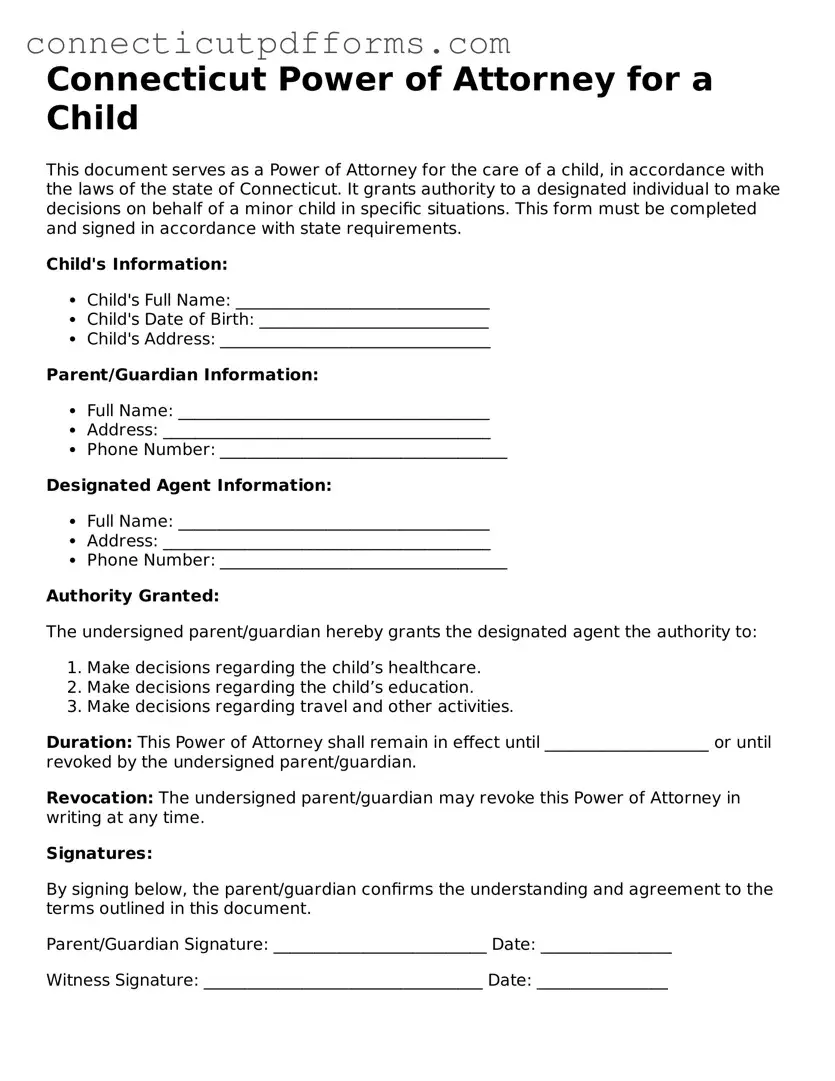Connecticut Power of Attorney for a Child
This document serves as a Power of Attorney for the care of a child, in accordance with the laws of the state of Connecticut. It grants authority to a designated individual to make decisions on behalf of a minor child in specific situations. This form must be completed and signed in accordance with state requirements.
Child's Information:
- Child's Full Name: _______________________________
- Child's Date of Birth: ____________________________
- Child's Address: _________________________________
Parent/Guardian Information:
- Full Name: ______________________________________
- Address: ________________________________________
- Phone Number: ___________________________________
Designated Agent Information:
- Full Name: ______________________________________
- Address: ________________________________________
- Phone Number: ___________________________________
Authority Granted:
The undersigned parent/guardian hereby grants the designated agent the authority to:
- Make decisions regarding the child’s healthcare.
- Make decisions regarding the child’s education.
- Make decisions regarding travel and other activities.
Duration: This Power of Attorney shall remain in effect until ____________________ or until revoked by the undersigned parent/guardian.
Revocation: The undersigned parent/guardian may revoke this Power of Attorney in writing at any time.
Signatures:
By signing below, the parent/guardian confirms the understanding and agreement to the terms outlined in this document.
Parent/Guardian Signature: __________________________ Date: ________________
Witness Signature: __________________________________ Date: ________________
